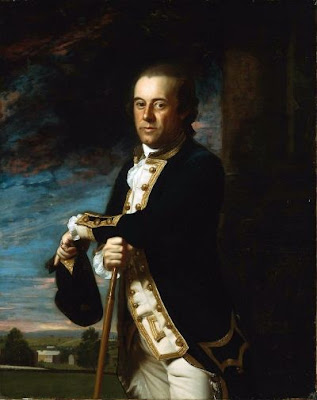
Most Americans know John Singleton Copley from his famous portrait of his contemporary, Paul Revere (above). That's a pity because the Revere portrait was done while Copley was still leaning how to paint, and it's far from being his best work.

Copley was an idealistic realist, a tradition that goes back at least as far as Rome. The Romans sculptors gave us portrait busts (above) that were startlingly realistic, and yet were overlayed with an ideal that most of the subjects shared, one which placed great value on being practical men of action.

Copley reminds me of another realist, Holbein. Thanks to Holbein we have what must be a starkly realistic depiction of the characters at Henry VIII's court. That's Thomas Moore above.

I'll mention in passing that Copley painted a number of famous seascapes (above) dealing with shark attacks.

If the Romans made portraits showing men of action, Copley made portraits (above) showing men of determination and thought. Copley loved to paint IQ points.

It's odd that a painter can be a realist and still skewer his portraits (above) in a direction that reflects what the painter himself thinks is valuable in life. Copley clearly values intellect and drive. These are no nonsense people who get things done.

Copley was an American who emmigrated to England just before the Revolutionary War. He taught himself how to paint from the engravings in books and the small number of European oil paintings that managed to find their way over here.

Once in England he soaked up the European styles like a sponge. You can see the influence of Gainsborough and even Rubens here (above). Boy, look how stiff the girl in the picture is! How did that happen?

This (above) is an interesting character study. The man shows diligence, judgement, wit and humanity.

I can't get over how real these pictures (above) seem. To judge from Copley people back then looked just like we do.











